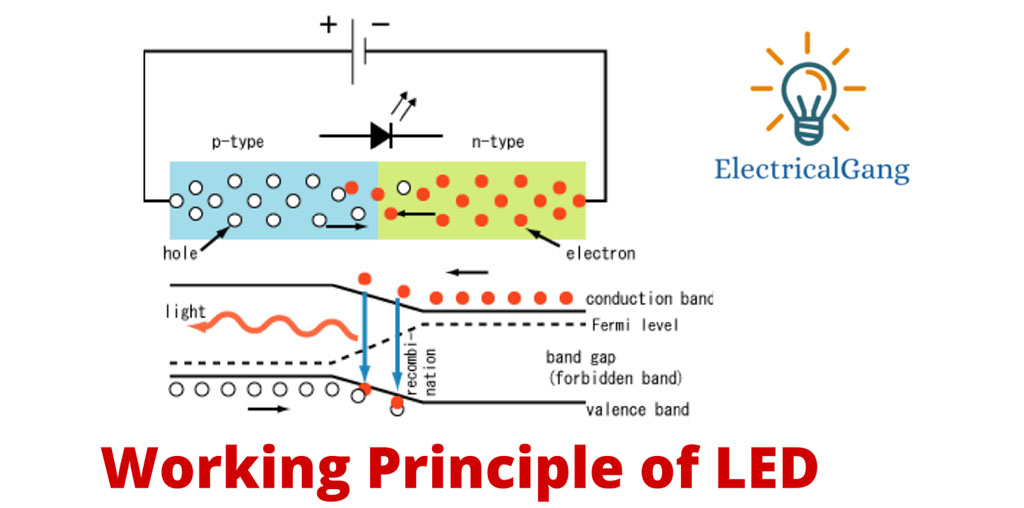Why Use LEDs for Commercial Lighting?
By Powerstar

The principle behind leds is an electroluminescent silicon diode. Each one has two semiconductors, an N-type that produces electrons and an P-type that produces holes.Photons are created when an electric current passes through. Some emit visible light, while others are produced by electrons in the N region and holes in P-region.
The blue portion of visible light is where most of the led light comes from. This part needs to be transformed into white light using a phosphor coating. To protect and change the light from the LED light’s grain, which is as small as a pencil dot in size, the chip must be encapsulated.

How are leds efficient?
Basically, it features small particles that can emit a lot of directional light with a small electric current. The beam angle of LEDs is typically between 15 and 180 degrees. This allows for precise light control and reduces light loss in the chamber. This is a significant difference to traditional light sources that emit light at a wide angle, scattering most of it in unfavorable directions. This means that the same level of illumination can be achieved using less light when using leds, reducing energy consumption.
On the other hand, the LED itself has a stronger ability to emit light, that is, a higher luminous efficiency. Incandescent bulbs have a conversion rate of about 5 percent, fluorescent bulbs 30 percent, and leds 40 percent. Another measure is the luminous efficiency of the light source, which is the efficiency with which the source converts 1 watt of electrical power into luminous flux, measured in lm/W. In the mid 1990s, the luminous efficiency of the first white LED was about 0.1lm/W. Now, the luminous efficiency of commercial cold color temperature white LED has reached 160lm/W, and the laboratory data has exceeded 250lm/W (CREE claims that the laboratory data has reached 303lm/W), indicating the huge potential of LED.
The CRI and CCT of leds
In the lighting design of retail space, color rendering index and color temperature are very important. This makes LED light sources more appropriate for complex lighting applications because of its strong advantages. By debugging phosphor with LEDs, you can create any K value of light between 2500K to 10000K. This is not possible with traditional light sources. LED technology can also be used to adjust the color temperature of a light fixture. This is useful in an environment that changes rapidly and is highly adaptable.
In terms of color rendering, the general color rendering index CRI of LED can do 98. For retail space, CRI > 90 can achieve the color rendering effect that is difficult for good human eyes to recognize the difference. At the same time, the special color rendering index plays a crucial role in it, so we should pay attention to the whole R1-R15. Like color temperature, leds have the ability to regulate this in a way that is difficult for other light sources.
In a commercial space, LED’s large range of color temperatures and high color rendering ability can display any product accurately and realistically. RGB can be used to increase the drama and interest in retail spaces.

Life of LED
What about the life span of leds? Good LED products can reach 50000h life, failure rate is also very low.
For LED lamps, effective heat dissipation is very important, because the accumulation of heat will cause drastic attenuation of luminous efficiency. So in actual use, we must choose good heat dissipation design of high quality lamps.
Cost effectiveness of leds
Why are leds cost effective when they are so expensive? Yes, leds are expensive, but that’s only part of the equation when it comes to cost-effectiveness. (Also, for today’s inexpensive LED products, be aware that this is just one consideration!)
If we think about cost-effectiveness in a holistic way, we have to think about the whole life cycle, which means we have to think about the whole life cycle cost, not just the initial cost. As mentioned above, leds are more energy efficient than traditional light sources. It is estimated that if all lights were replaced with leds, they could save 30% of the energy used by humans. Lighting, however, accounts for almost 20% of human energy consumption. For older, more power-hungry lights such as incandescent bulbs, 70 percent of the savings can be achieved simply by replacing LED bulbs.

Why is LED environmentally friendly?
Leds use less energy which means that fewer resources are required, which decreases energy loss and environmental pollution from power generation.
Second, leds contain fewer harmful substances than traditional light sources.The majority of conventional light sources have large quantities of gaseous hazardous material. These materials can pose a danger if the source is damaged or if they are handled. This solid substance is very small in leds, so it prevents us from being damaged. It’s also easy to separate and dispose off when recycled.


